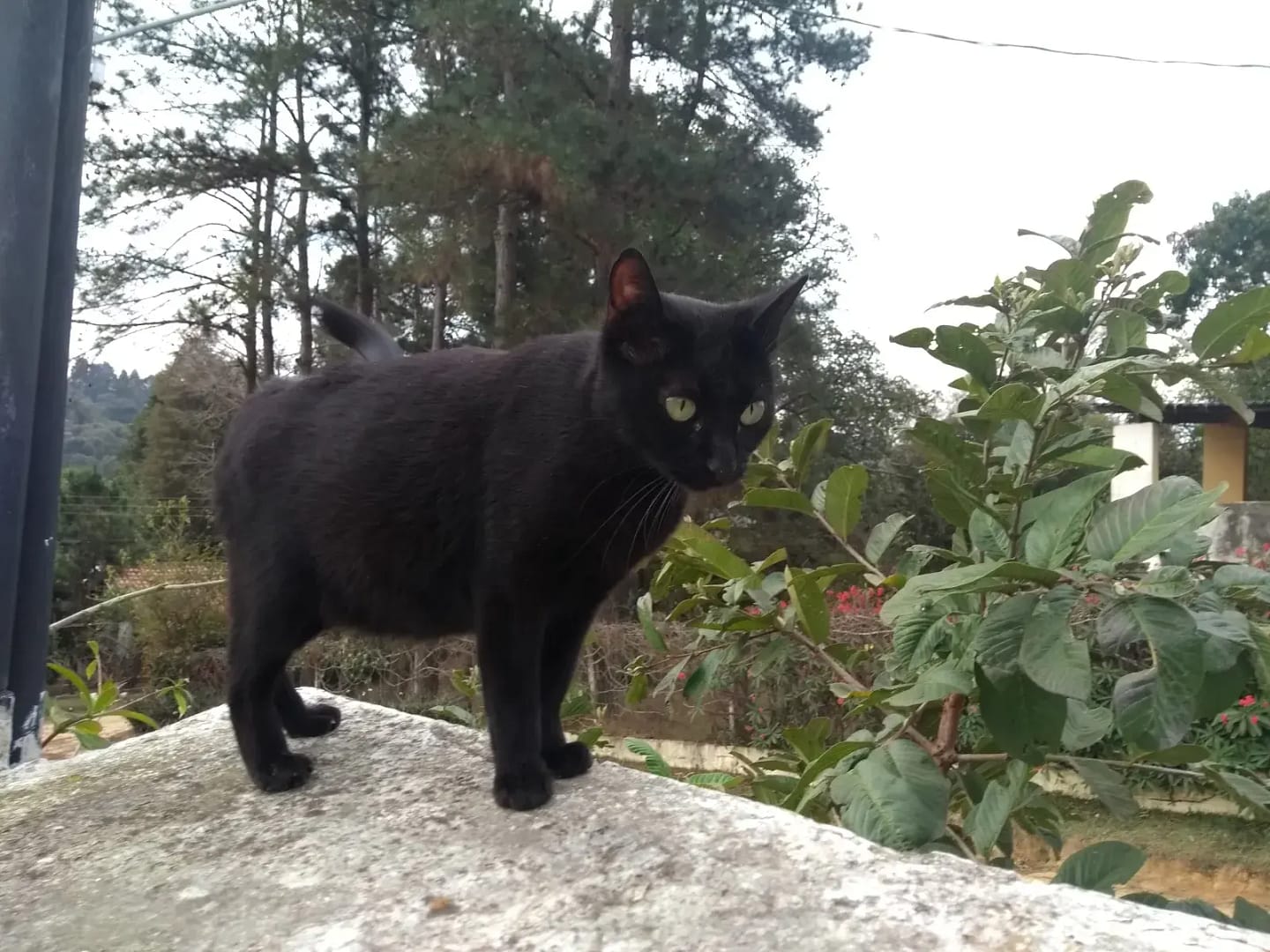As pet parents, we’ve all felt that gut-wrench of injustice when a shelter story hits too close to home—especially for a cat whose quirks make her anything but “unadoptable.” Imagine a tiny stray, hopping on her back legs like a kangaroo, facing the unthinkable because of her unique body. But one vet tech’s heart said no, turning a heartbreaking fate into a tale of pure, purring joy.
If you’ve ever advocated for a special needs cat, Rue’s story will warm your soul and remind you why we fight for the undercats.
A Chance Encounter That Changed Two Lives
It was back in 2022 when Paget Williams, then a vet tech at an animal clinic in Calgary, Canada, first laid eyes on the stray. Nothing was known about her past—no collar, no microchip—just a clear sign she was one-of-a-kind.
Born with radial hypoplasia, a congenital condition where the radius bones in her front legs are underdeveloped or twisted, this little one couldn’t walk like other cats. Her front legs were shorter and thinner, forcing her to hop on her powerful hind legs in a kangaroo-like gait that’s equal parts adorable and awe-inspiring.
The vet’s assessment? Her disability meant a poor quality of life, so euthanasia was on the table. But Paget couldn’t let that happen. “My heart broke for her,” she shared with Carinhoso.
Skin and bones from her stray days, yet the moment Paget lifted her from the kennel, she erupted into the loudest purrs and melted into pets. “It was clear she could live happily,” Paget said. That night, she brought her home—no fosters, no maybes. Named Rue (short for kangaroo, naturally), this twisty cat had found her human.
What Is Radial Hypoplasia? A Quick Guide for Cat Parents
Radial hypoplasia (RH) might sound scary, but it’s a genetic quirk that turns some cats into “squitters” or “twisty cats”—those endearing nicknames for felines with short, bowed front legs. It’s not painful at birth, but it can lead to mobility challenges like trouble bearing weight on the front paws or a hopping walk.
As cat parents to special needs pets, we often worry about long-term care. Here’s what you need to know:
- Causes: Usually genetic (dominant trait, so one parent passes it on), sometimes linked to environmental factors in utero.
- Sintomas: Short/twisted forelegs, kangaroo-like hopping, possible arthritis as they age.
- Dicas de cuidados:
- Create an accessible home: Ramps for counters, soft bedding to protect elbows.
- Monitor joints: Vets may recommend pain relief for later-life arthritis.
- Diet matters: Weight management prevents extra strain—Rue’s weight gain added protective padding for her hops.
- No surgery needed: Most RH cats thrive without it, adapting like pros.
Rue’s case proves it: What looks like a limitation is just her superpower. She zips around, jumps high (yes, really!), and even mixes in four-legged walks for balance when she’s feeling fancy.
From Hesitant Foster to Forever Fluff: Rue’s Homecoming Glow-Up
Paget wasn’t shopping for a new pet—she was juggling school and her resident dog, Finjamin. Fostering seemed like the plan, but love doesn’t follow schedules. “We instantly fell in love,” she told SnuggleSouls. After just two days of gentle intros, Rue was exploring freely, snuggling on the couch, and bonding with Finjamin like they’d been littermates.
No extra accommodations needed—Rue’s agile, trouble-free, and the ultimate lap cat. “She loves to snuggle, gets along with every animal she meets, and never causes trouble,” Paget said. As for that initial worry about her forearms?
A healthier weight has padded them perfectly. Today, Rue’s living her best life: kangaroo bounds through the house, endless cuddles, and zero signs of the “poor quality” label the vet once slapped on her.

Viral Vibes: Rue’s TikTok Takeover and the Heart-Melt Comments
Paget couldn’t keep Rue’s magic bottled up, so she shared their story on TikTok (@pagetwilliams). The post? Over 673,300 views and 139,900 likes, with a caption that tugs every string: “You deserve all the love in the world my little Rue.”
The internet? Obsessed. Over 1,700 comments flooded in, celebrating her T-Rex arms and extra toe beans. One fan gushed, “This beautiful soul is going to give you the greatest love you’ll ever know.”
Another joked, “Extra toe beans and little t-Rex arms! She’s adorable!” We love the “Cat rex” vibes and the simple “Thank you for adopting this baby.” Paget was floored: “I knew Rue would capture hearts, but I never expected so many kind and encouraging messages. For me, there was never any question—saving her was the only option.”
Stories like this spotlight the “cat distribution system” at work—those serendipitous moments when a pet chooses you. They also challenge myths about disabled cats, showing they’re not just adoptable; they’re extraordinary.
Takeaway for Pet Parents: Every Cat Deserves a Champion
Rue’s hop from the euthanasia list to couch queen is a powerful purr-sonification of resilience—and the impact one advocate can have.
If you’re a cat parent eyeing a special needs adoption, remember: Disabilities don’t define joy. With ramps, patience, and vet smarts, these twisty wonders thrive. Paget’s story reminds us to trust our guts when a kitty needs us. Who’s the Rue in your life waiting for their forever hop?
PERGUNTAS FREQUENTES
What is radial hypoplasia in cats, and how does it affect them?
Radial hypoplasia is a genetic condition causing short, twisted front legs, leading to a kangaroo-like hop. Most cats adapt well, but they may need joint monitoring for arthritis later in life.
Can cats with disabilities like Rue live happy, healthy lives?
Absolutely! With accessible environments, a balanced diet, and vet care, they often become agile and affectionate—like Rue, who jumps high and cuddles endlessly.
How can I prepare my home for a special needs cat adoption?
Add ramps or steps for furniture, use soft bedding for joint protection, and consult a vet for mobility tips. Start with gradual intros to other pets for a smooth settle-in.













